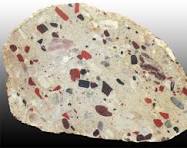 |
| Lake Huron |
- Lake Huron, the 2nd largest of the Great Lakes by surface area, has a shoreline of over 3,800 miles including 30,000 Islands.
- It is shared on the north and east by the Canadian province of Ontario and on the south and west by the U.S. State of Michigan.
- There have been more than 1,000 shipwrecks on this lake, with many still at the bottom. Some are preserved as artifacts. The Fathom Five National Marine Park is home to 22 of these wrecks.
- The wooden paddle steamship, The Keystone State, that was used during the Civil War, disappeared in Lake Huron in 1861. 152 years later, it was found under 175 feet of water near Harrisville, Michigan.
- On November 3, 1913, Lake Huron was hit with a storm that produced winds of 90 mph and ocean-like waves of more than 35 feet. The storm lasted 16 hours, sank 10 ships and killed 235 seamen.
- Lake Huron's name originates from the French explorers who named it after the Huron people who lived along its shores, calling it "Lake of the Huron Indians."
- Lake Huron's extensive shoreline is dotted with unique rock formations. Flowerpot Island has incredible rock structures resembling flower pots that decorate its shoreline. These structures are made up of layer upon layer of sedimentary rock that's been eroded over time by wind and waves.
 |
| Flowerpot Rock Formations |
Lake Huron and Lake Michigan are culturally known as two lakes, despite being connected. The splitting point is the Straits of Mackinac, the short waterways between Michigan's Upper and Lower Peninsulas, traveled by the Mackinac Bridge. (I'll save the story of Mackinac Island for another post.)Straits of Mackinac
- Lake Huron has an underwater forest....7,000-year-old petrified trees have been found off the shores of Lexington, Michigan. The discovery provides researchers clues about human activity in the region before the Great Lakes were formed.
- Goderich Mine, the largest salt mine in the world, runs partly 1,800 feet under Lake Huron. The mine has a production capacity of 9 million tons per year, and produces 7,250,000 tons per year.
 |
| Pudding Stone |
When one thinks about the these large interconnected freshwater lakes, it helps to understand that the water flows from Lake Superior, into Lakes Huron and Michigan, then into Lake Erie, over Niagara Falls, into Lake Ontario, and out the St. Lawrence Seaway to the Atlantic Ocean. This flow is the key reason why the Great Lakes remain freshwater bodies, as the salt content is carried away with the outflow. The Great Lakes are refilled by rain and snow, surface water runoff from streams and rivers, and groundwater.
"Those grand freshwater seas of ours--
Erie, Ontario, Huron, Superior and Michigan--
possess an ocean-like expansiveness,
with many of the ocean's noblest traits."
~Herman Melville

